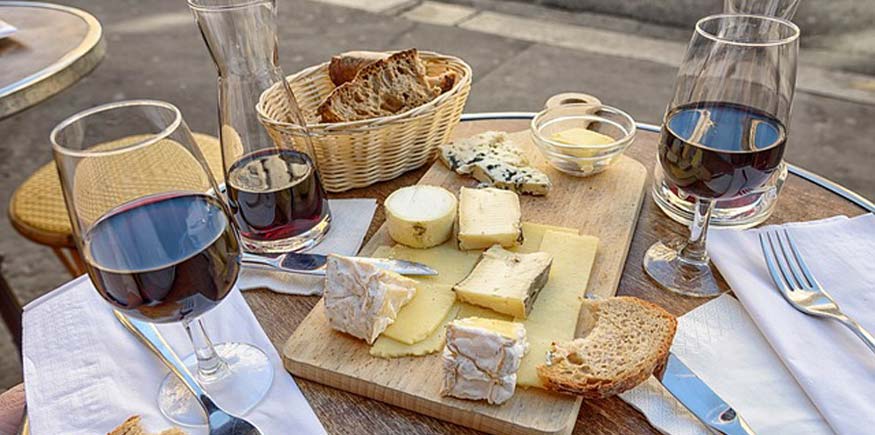It seems to be a classic combination – wine and cheese. It appears on many restaurant menus, and even online wine shops sell cheeseboard utensils so you can make a real event of it. However, did you know not all cheese will work with all wine, and vice versa?
Because of the cheese varieties on offer, as well as the various wine options, it’s fair to say not all are going to be matches made in heaven. If you’re planning a wine and cheese night with the girls and you’re not sure what works and what doesn’t, consider these pairs below.
Aged with Bold
A common rule to follow when trying to match cheese with wine is to think about their intensity. Is the wine or cheese strong in flavour? Or, is one stronger than the other? If you were to select an oaky red and pair it with a mild Gruyere, for example, you would find the wine overpowers the cheese.
Therefore, always match intensity levels. Aged cheese with bold red wine is a good example. As cheese ages, the flavours become more intense. As a result, the high tannin level in the wine begins to complement the fat content and richness of the cheese. Most combinations you see on any restaurant menu will work well, but if you’re not sure, think of the number one rule: equal intensity.
Tip: If you have purchased a rich red wine from your local bottle store or an online wine shop, select Gouda, Parmesan, and Provolone cheese to accompany it.
Stink with Sweet
Not everyone is a great fan of blue vein cheese or similar varieties. The smell, the taste, and even the look can be too much for some palates to bear. However, if you pair it with sweet wine, you may find the flavour is not only bearable but delicious.
When you pair a sweet wine with sharp cheese, the sweetness and the intensity of the cheese can gel quite beautifully. In fact, the sweetness tends to get rid of that “tang” from the cheese, to create a creamy composition in your mouth.
Creamy with Sparkling
A standard addition to any cheeseboard is creamy Camembert and Brie. They are the crème de la crème of cheeseboard additions and tend to work well with almost anything that features on your platter. While they may pair well with all those crackers you’ve laid out, they may not match well with your wine of choice.
Brie, Camembert, and other creamy cheese work well with high-acidity, sparkling wines. As you know, creamy cheese can leave an aftertaste and a slight tackiness in your mouth. While it’s not unpleasant, you will enjoy being able to cleanse your palate with a crisp and clean Sparkling wine that enables you to go back to the platter for round two.
When in Doubt?
If you’re not sure what wine your friends will be bringing, or you’ve bought something from an online wine shop that sits in a “gray area”, there are a few cheese options that can work with anything. Even if you find yourself with a mix of light wines and rich wines, firm cheese such as Swiss and Gouda can blend beautifully with both red and wine varieties.
Wine and cheese is a traditional combination that spans hundreds of years. Even after all this time, however, not everyone is familiar with what works and what doesn’t. Whether you’re in a restaurant and want to make sure your wine works well with your cheeseboard, or you’re planning a night with the girls, keep these tips above in mind.

